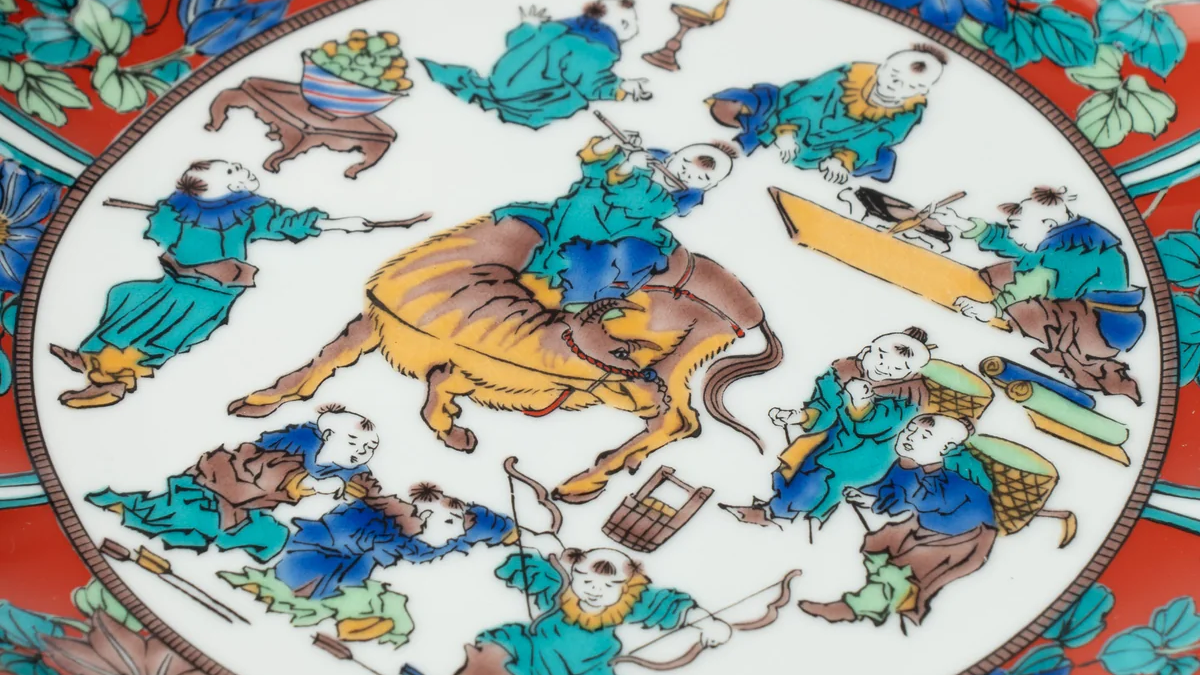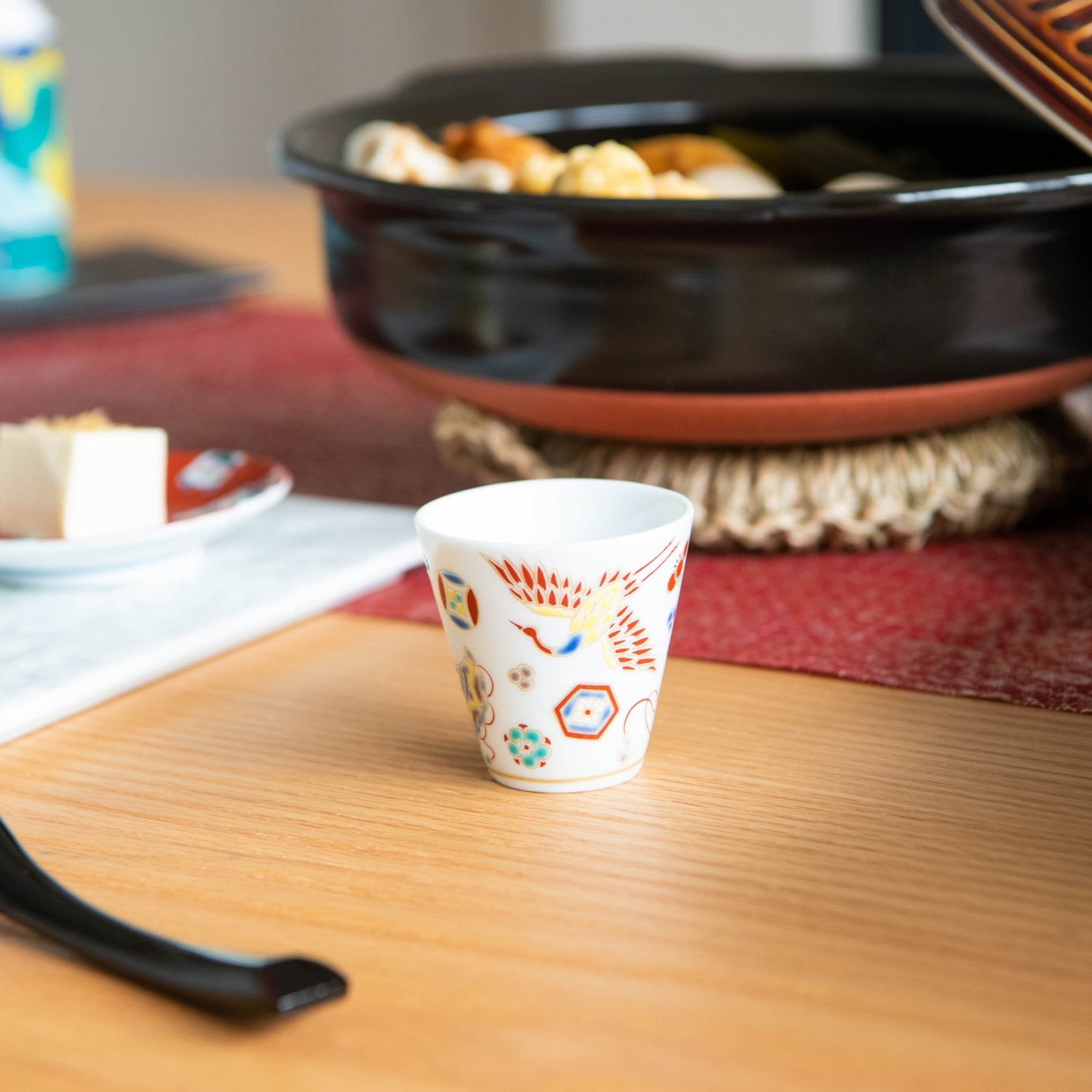
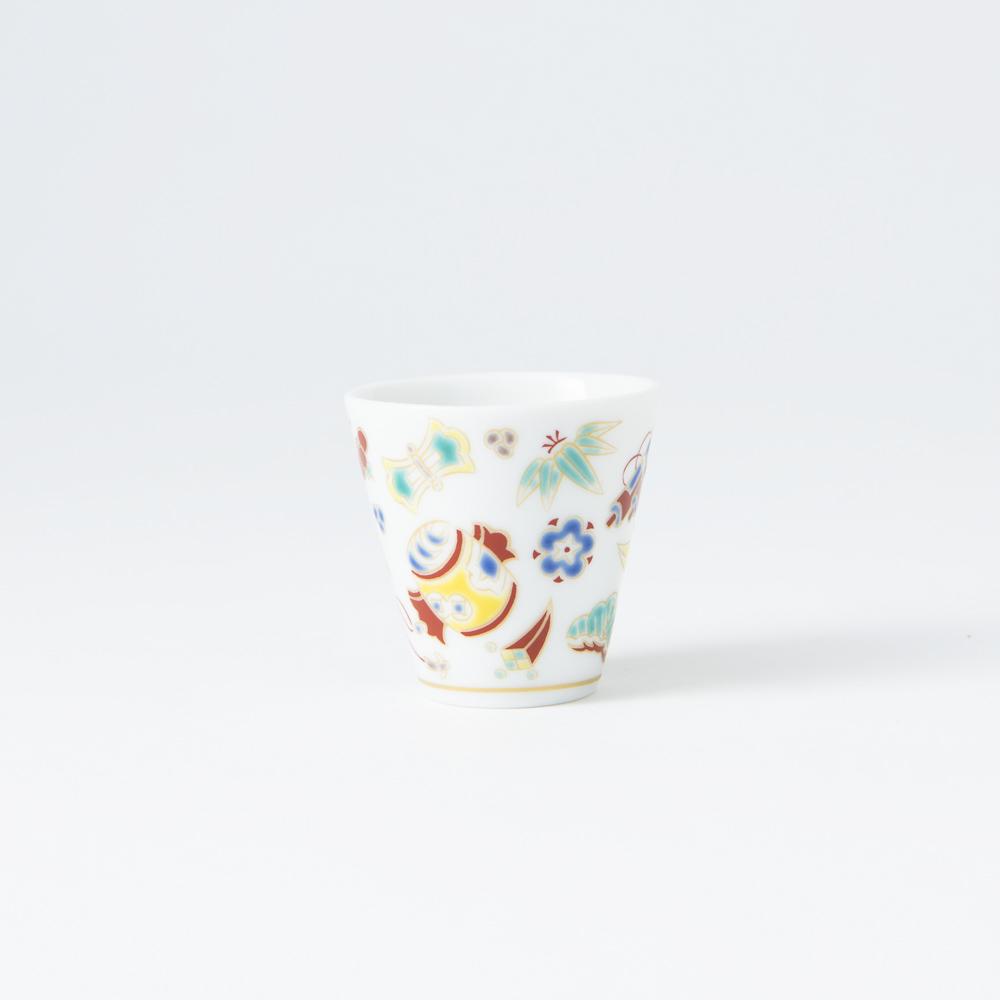
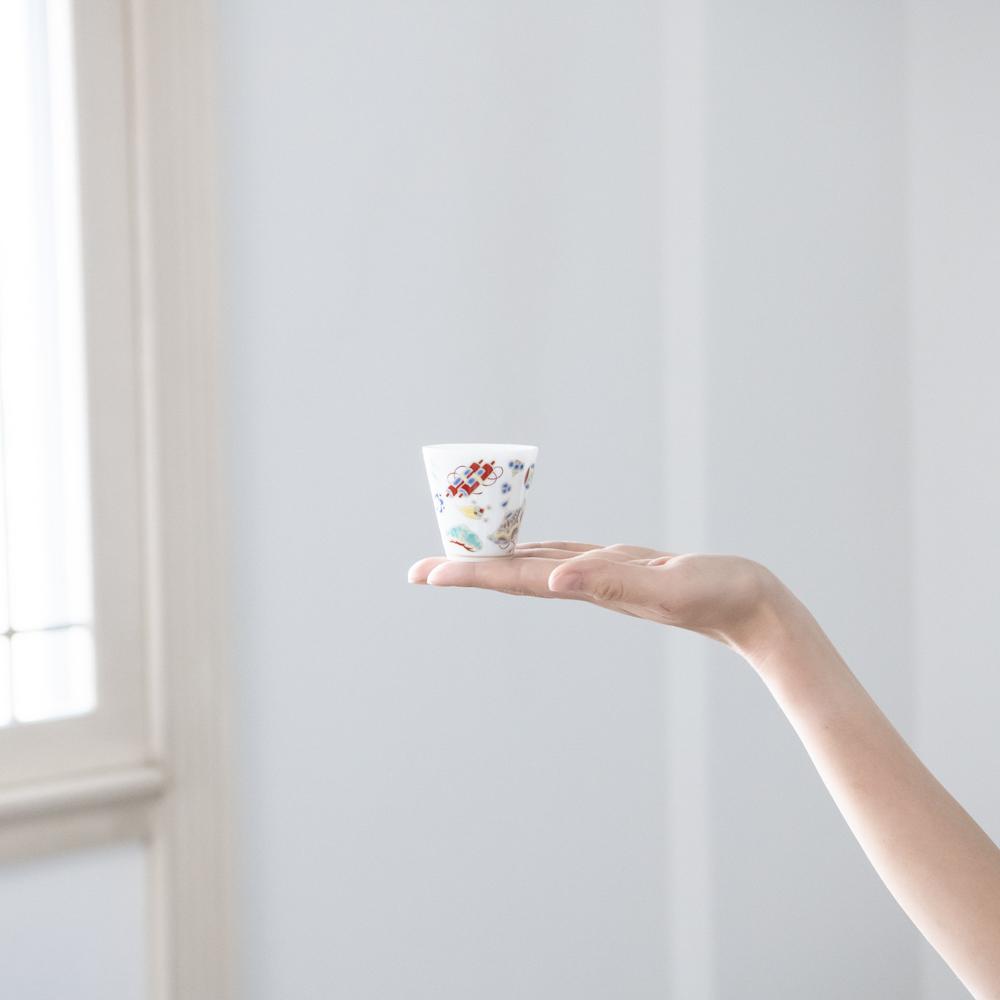
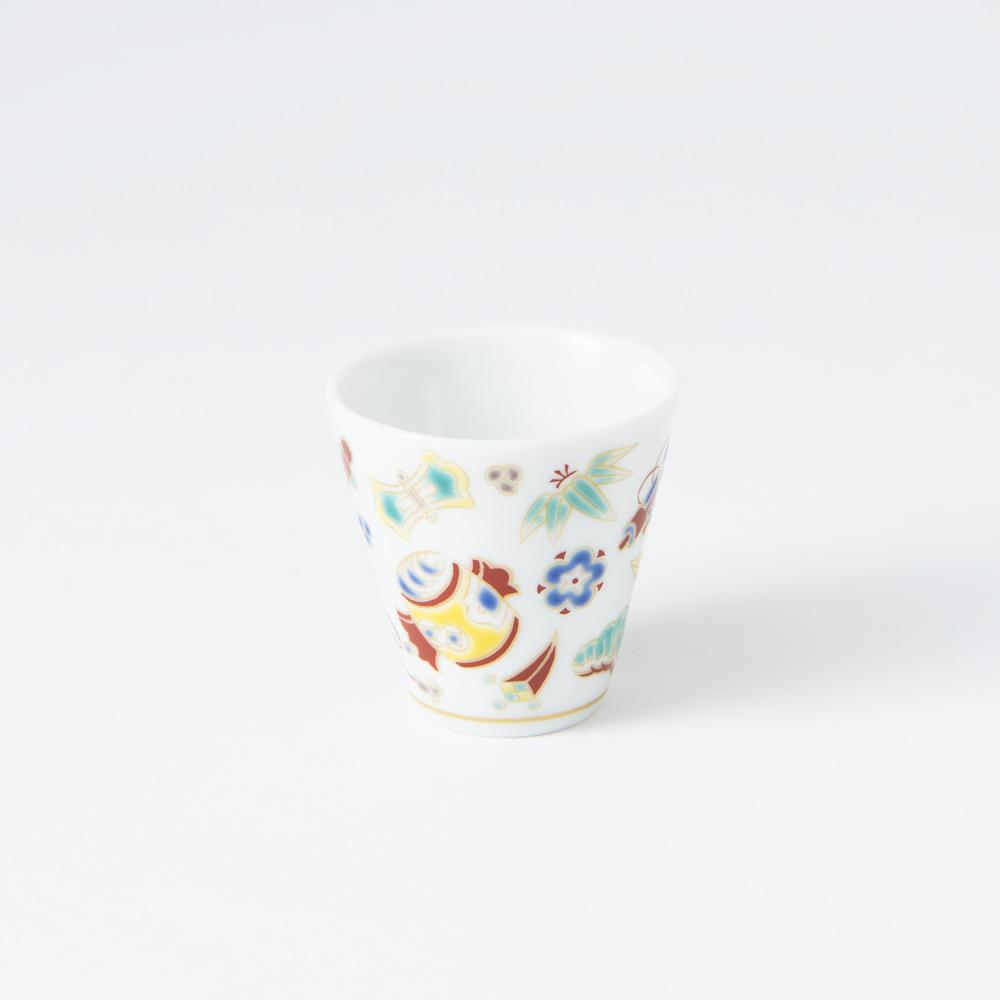
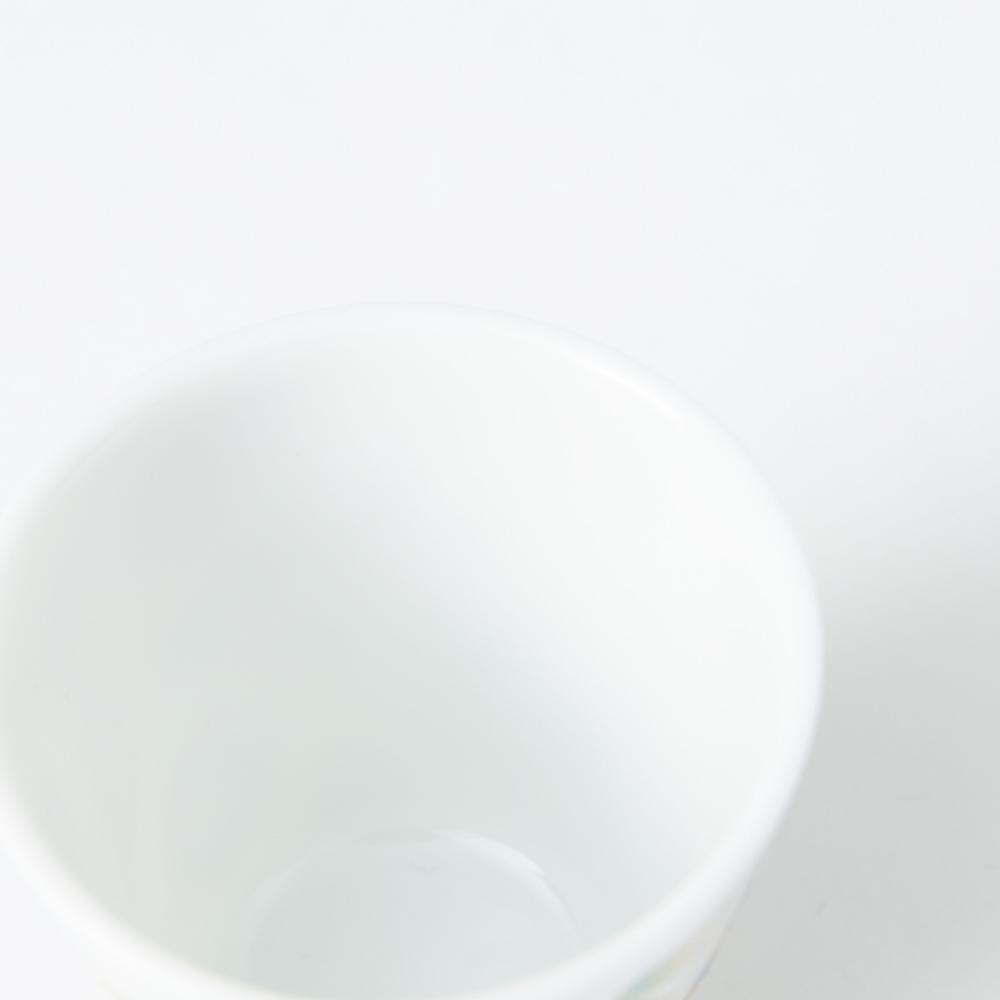
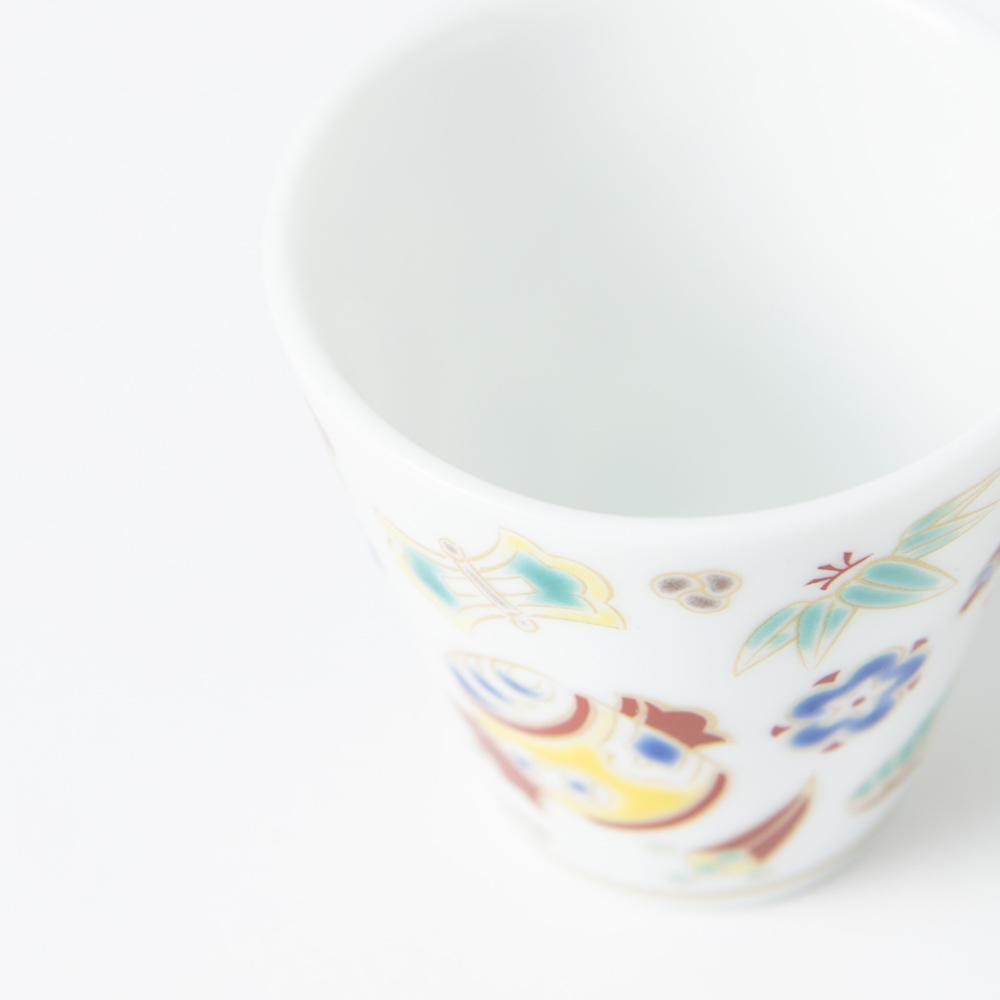
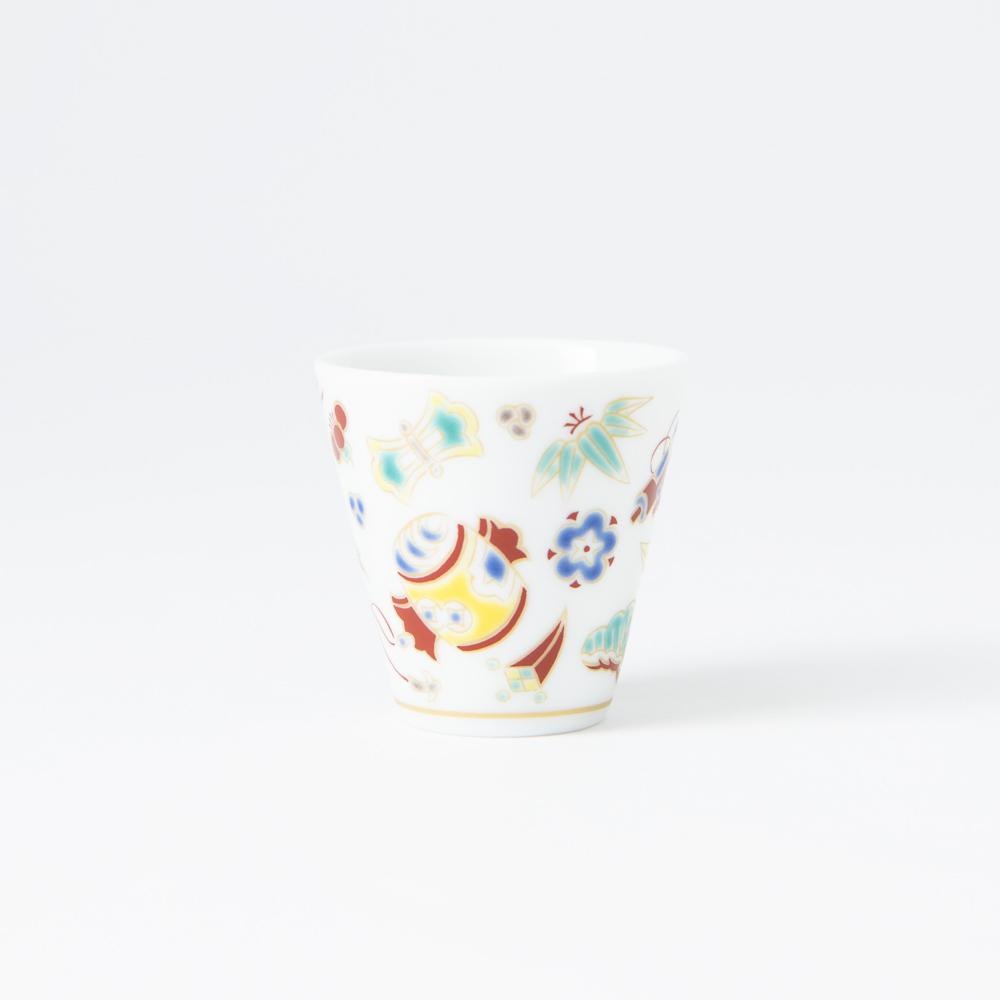
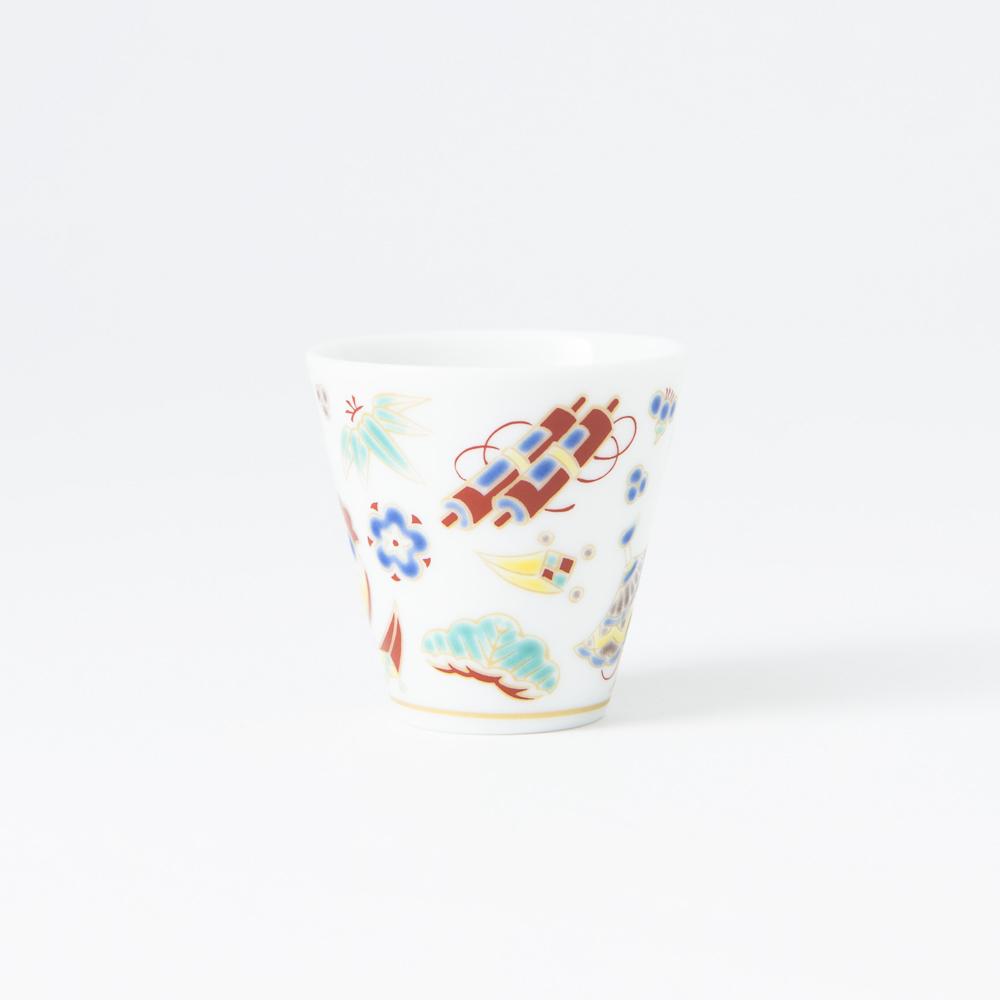
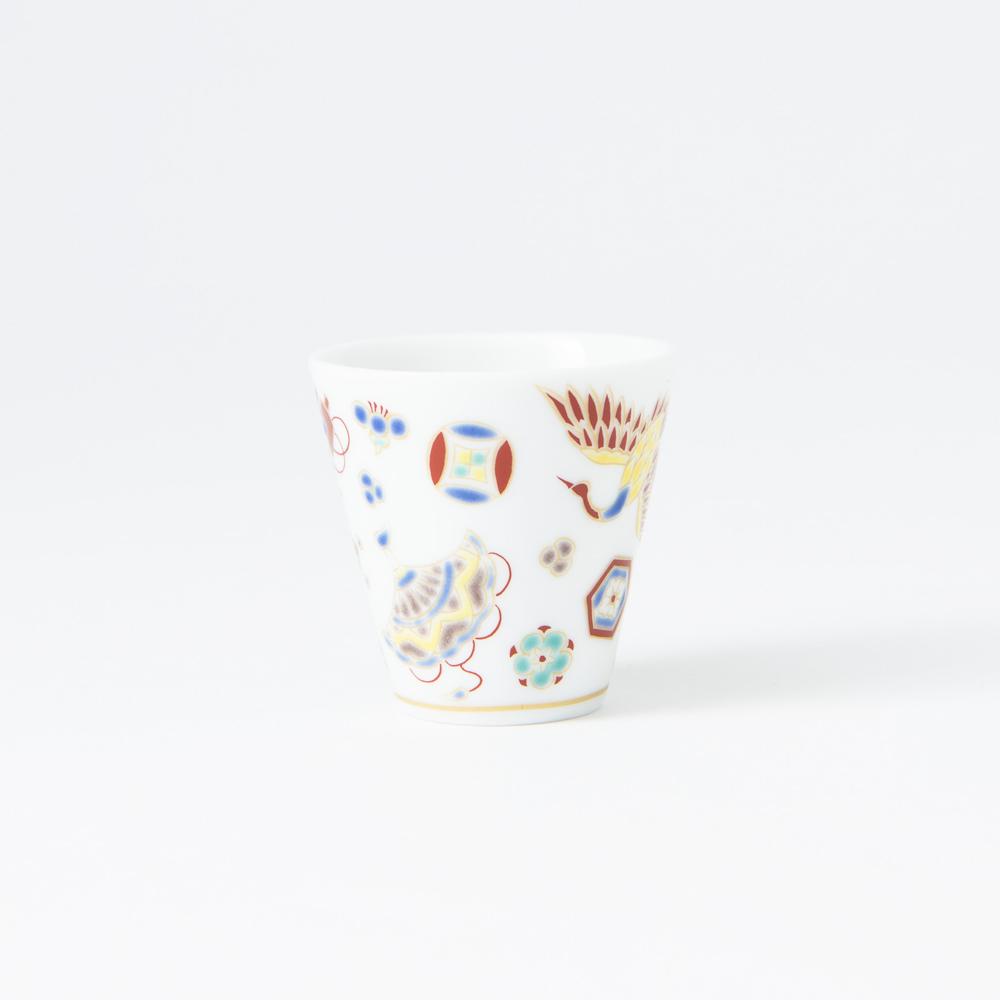
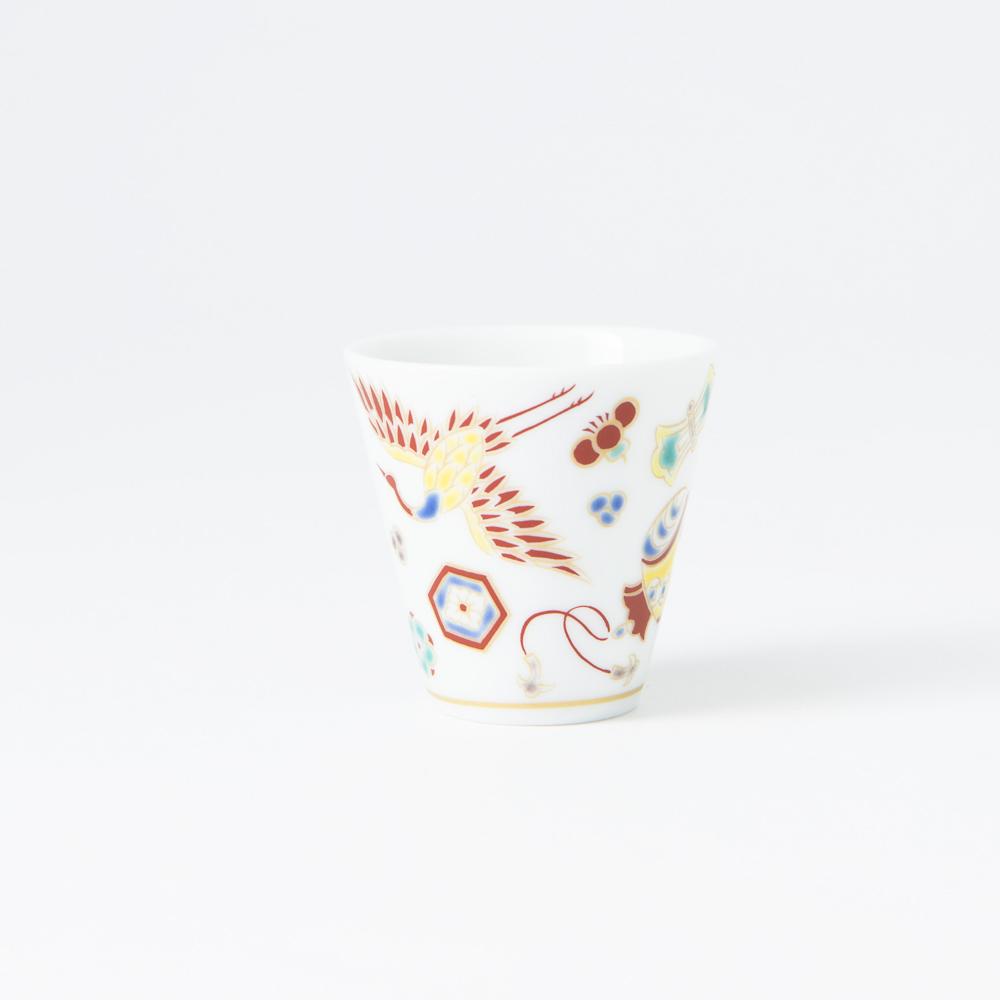
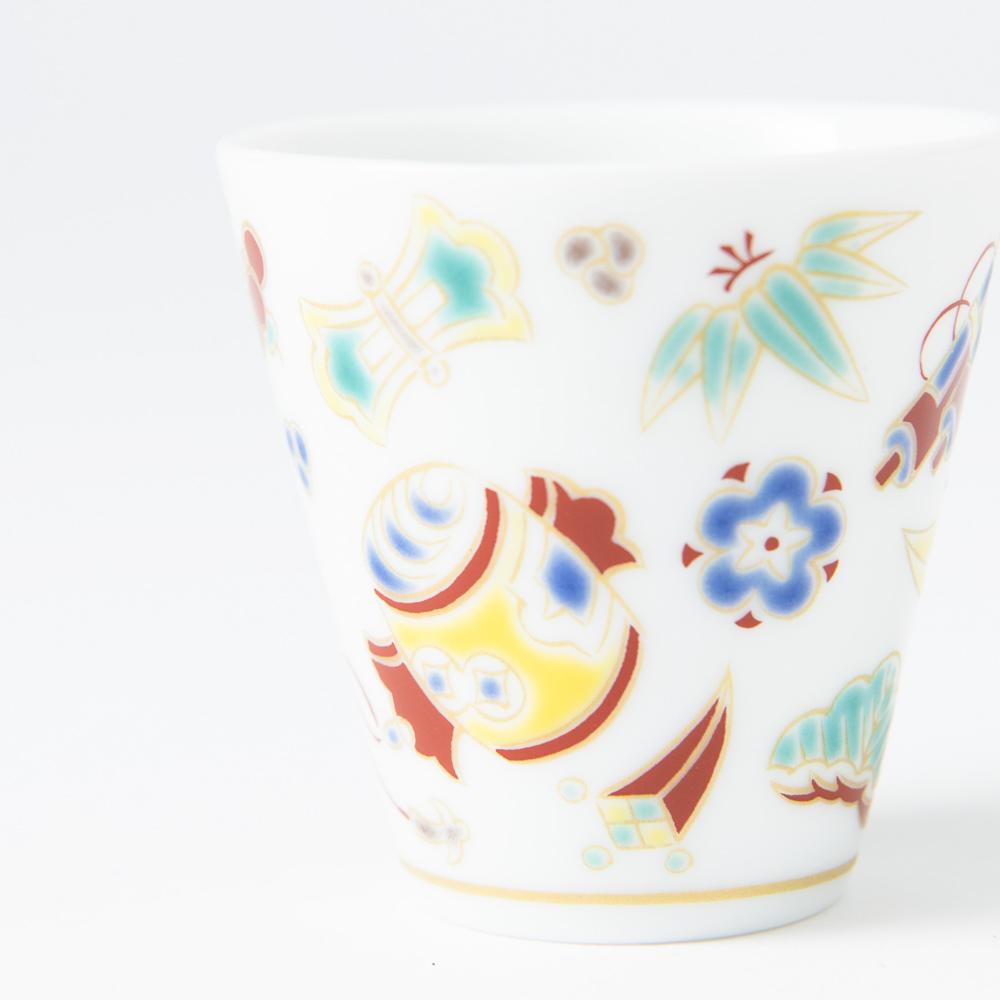
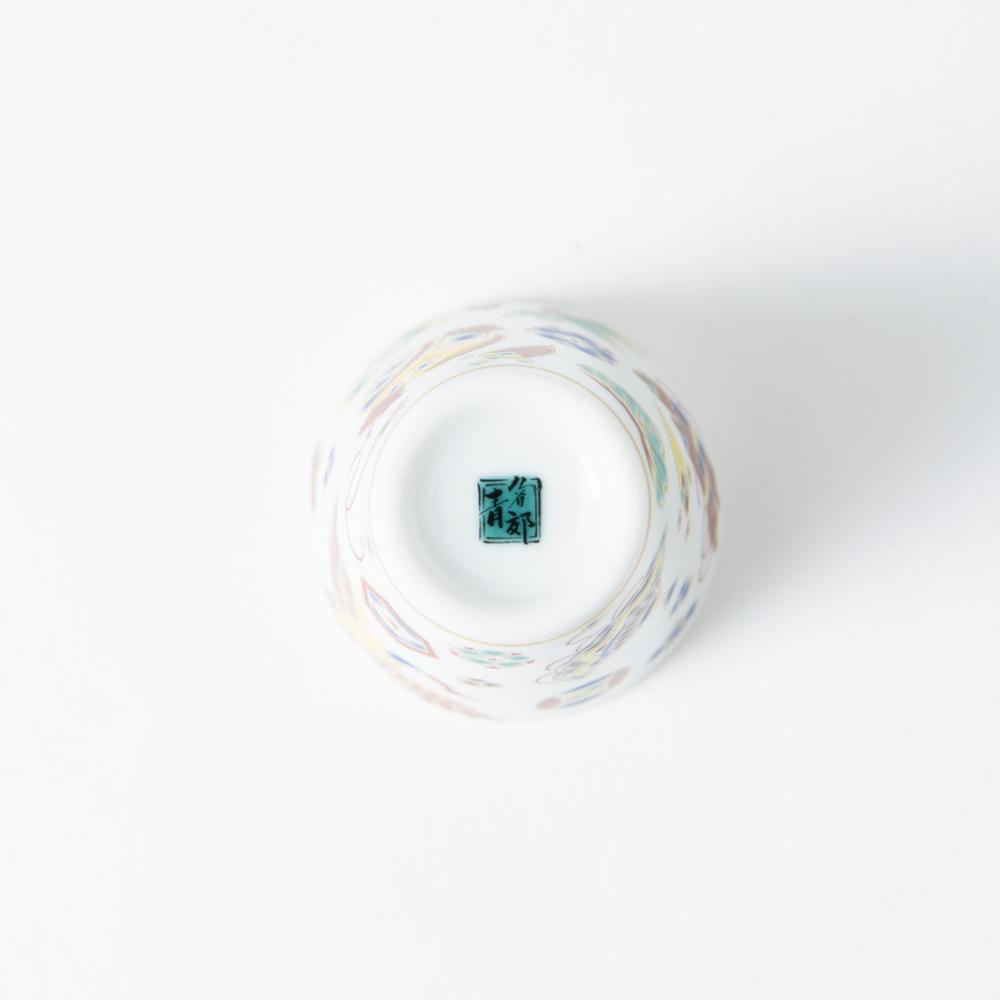
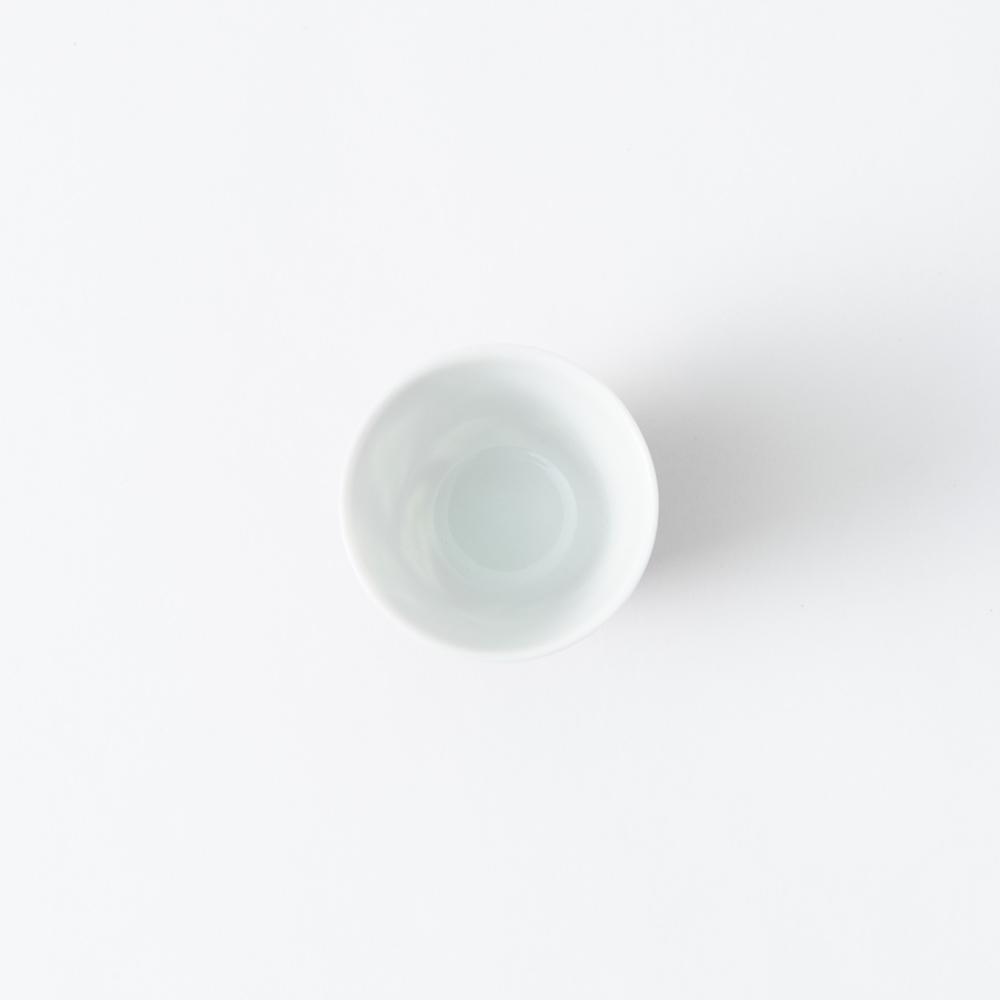
Auspicious Omens Ochoko Sake Cup
Estimated Shipping Widget will be displayed here!
This ochoko sake cup features happy motifs such as a lucky cat, a daruma doll, and a chidori, which are said to bring good luck in Japan.
The smooth rim provides a delicate texture of sake to the mouth. It is a perfect sake cup for celebrating occasions, such as New Year's Day, birthdays, and housewarming party.
Each piece is painted with Japanese color paint, which is one of the remarkable features of Kutani ware, making the texture of the cup warm and appealing.
We also have more items with matching designs, such as plates and sake carafes.
DETAILS
| Quantity | 1 |
| Size |
D 5.5 cm (2.2 in) x H 5.3 cm (2 in) |
| Capacity | 45 ml (1.5 fl oz) |
| Material | Porcelain |
| Microwave | Yes |
| Dishwasher | Yes |
Maker / Brand
Seikou Kiln, founded in the early Taisho era (1912–1926 CE) in Nomi City, Ishikawa Prefecture, has long been dedicated to the art of Japanese overglaze painting for Kutani ware. Through years of research, the kiln perfected a high-quality technique for transferring designs and patterns using in-house printed sheets. This method preserves the transparency of glassy glazes and the depth of thick overglaze paints, achieving the same richness as traditional hand-painting. Their work has earned prestigious accolades, including recognition in the Japan Tourism Agency's Charming Japanese Souvenir Contest.
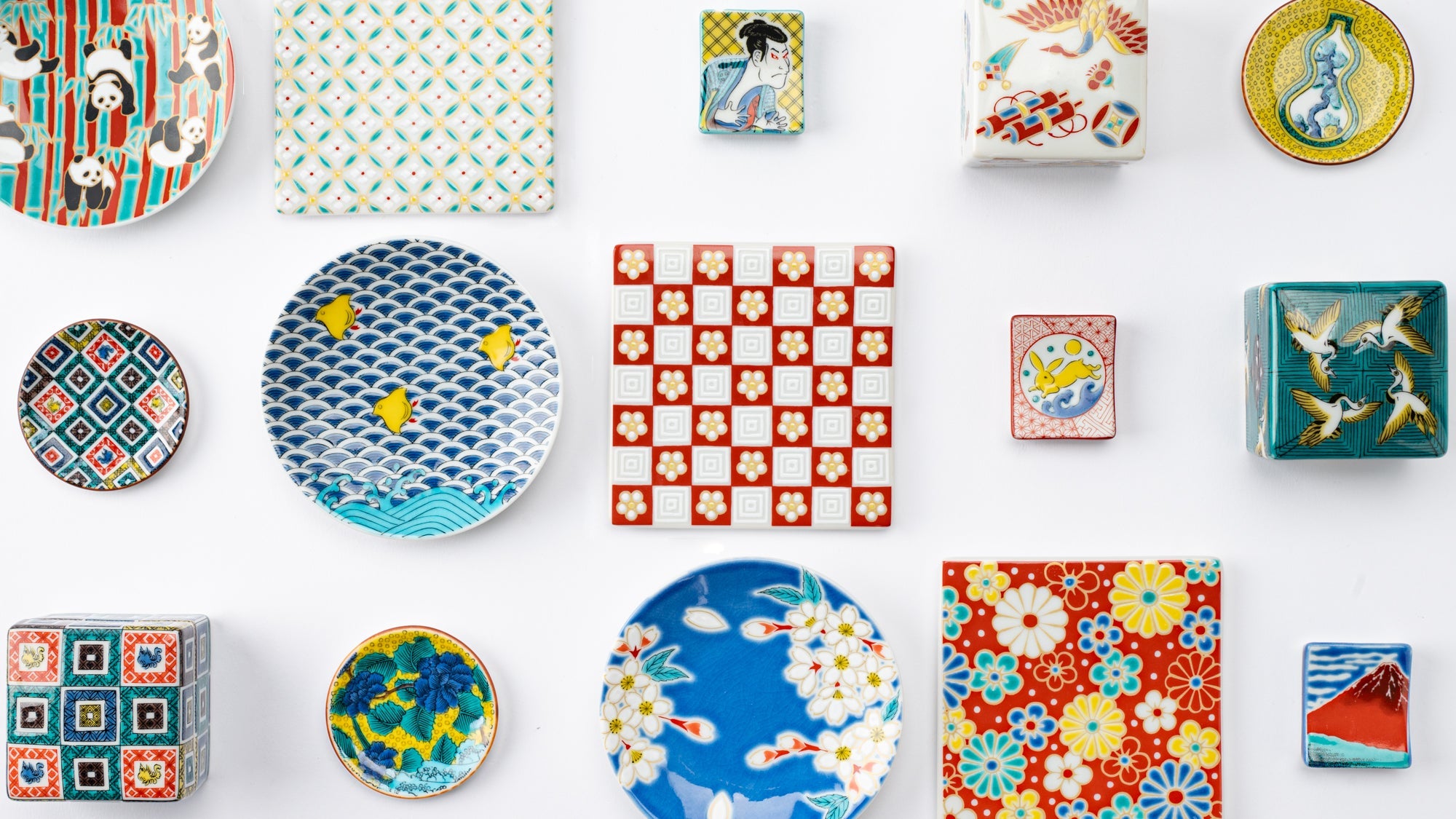
Crafts
Kutani ware is a pottery produced in the Kaga region of Ishikawa Prefecture, with a history spanning over 350 years. It is characterized by the heavy brilliance of the five colors of navy blue, red, purple, green, and yellow that are applied to the bold and daring lines. Its long history has evolved through the tireless efforts and enthusiasm of people who have sought innovation while maintaining tradition.
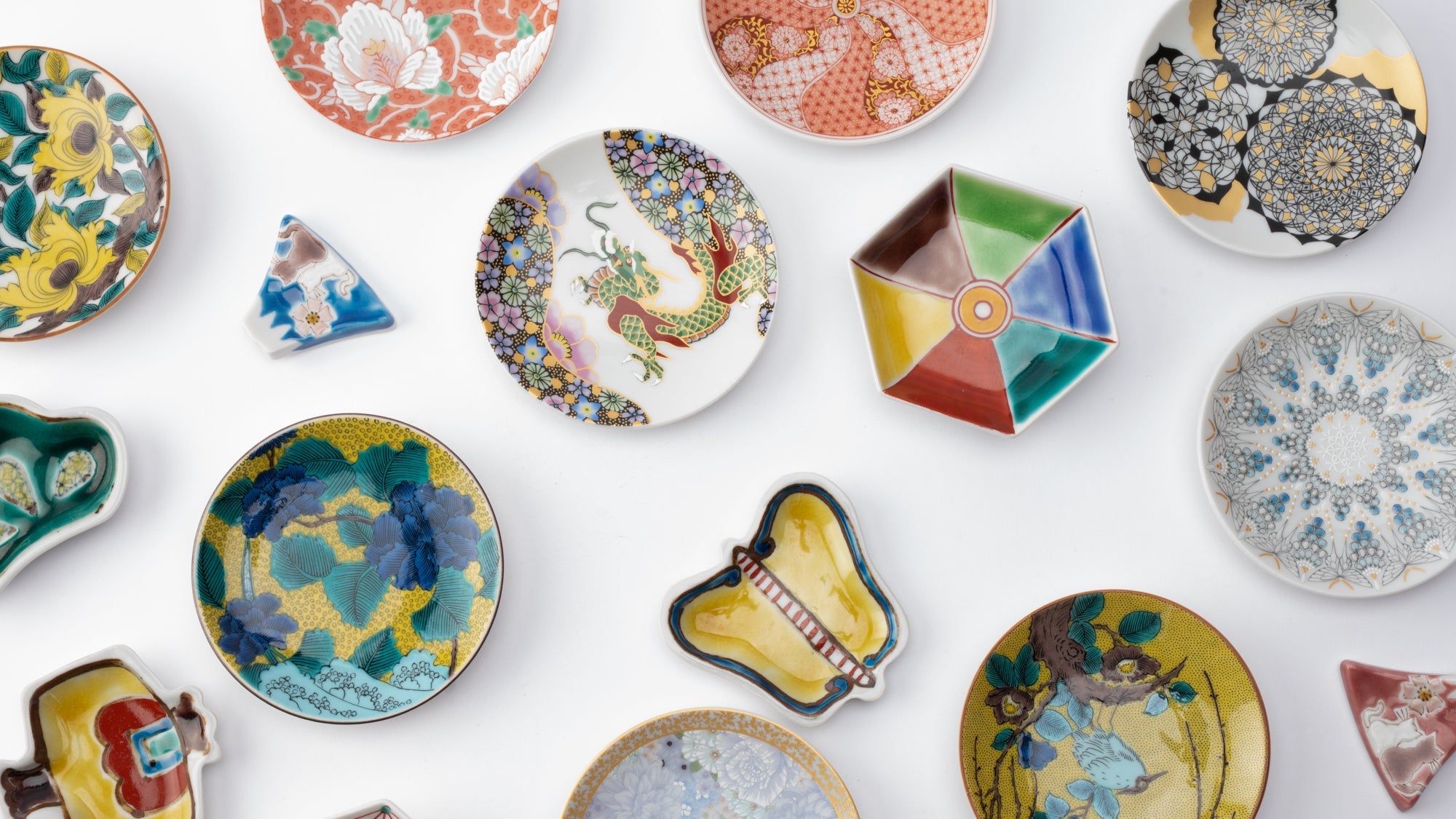
Choose options













Estimated Shipping Widget will be displayed here!
Ochoko
An ochoko is a small sake cup, usually holding a bit more than a sakazuki and accommodating two to three sips. Originally, ochoko sake cups were used as kobachi small bowls for side dishes. However, around the mid-Edo period (1603 CE–1868 CE), they began to be used at sake gatherings, where people would start with a sakazuki and then switch to an ochoko as the evening went on.
Ochoko sake cups come in various materials and shapes. The sake cups included in sake sets are commonly ochoko sake cups.
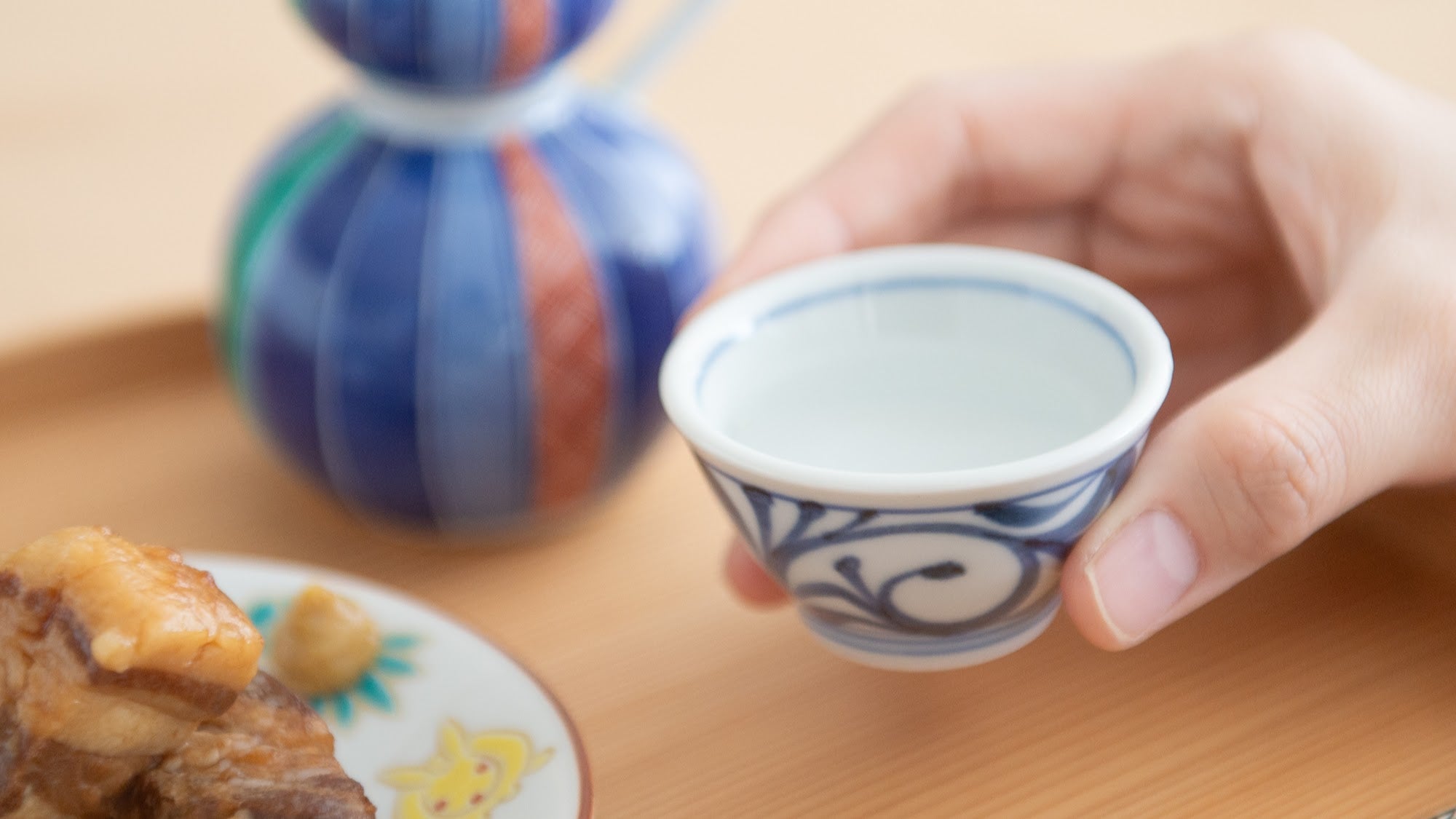
Mokubei
Approximately 100 years after the close of the ko-Kutani kilns, a large group of Kutani ware kilns collaborated to revive its legacy. The style that emerged during this period is called Revived Kutani, with Mokubei being one of its notable styles.
Guided by the Kyoto painter Aoki Mokubei, this style is characterized by the use of calming red pigments as a base. Pieces often depict people, many including children, on a vibrant background, creating harmonious and ornate designs.
